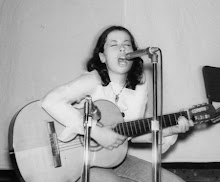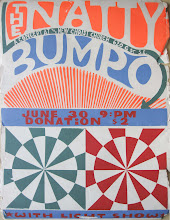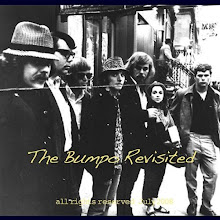This week my calendar rolls over to 61. That's an achievement of sorts --- I have survived this long, in spite of myself.
I have been tempted to do something dramatic. I may cut my hair. It's now almost totally white and it's down to my waist. I have been wearing it in a hair appliance-enclosed bun for work much of the time, or in a pony tail. Now that summer is (maybe) arriving, it would be less of an encumbrance short. Sometimes when I look in the mirror, I see a school marm, a librarian or a nun. William once told me he had a dream that I became a nun. It's almost come true.
At a company Christmas party for employees of the tiny newspaper chain we belong to, I blurted out "news nun" as a description, something that just came to me instantly, but it fits.
I am determined I will not spend my pre-retirement years mired in a rut, especially difficult when living with an aging mother.
One small, swift jolt out of the rut: I will be going to Alaska for a week at the end of July. I already have my plane ticket and have paid for the bus ride to the end of the road in Denali. I hope to get some wildlife and scenery pictures to add to my Alaska DVD.
My sister will be coming on the bus trip. We will stay the two nights somewhere at the entrance to the park, then drive back to her home in Eagle River. I may try to drive down the Kenai for a couple of days while I am there. Perhaps I'll stop by and see Glenn at his restaurant, who liked the couple of recipes I gave him and said he will use them. I worked a season at the end of the road in Denali, at the Kantishna Roadhouse as the baker.
Here is my recipe for Kantishna Sourdough Bread:
This recipe is huge --- I used a floor Hobart and it made 8 large French-style loaves. A good starter is needed. I originally used “Gold Rush” brand, which supposedly dated from that era and was available in yellow packets in Anchorage. However, any good sourdough starter will work. Some are slower than others. I have made this bread without adding supplemental yeast --- it just takes longer to rise, at least 4-5 hours as opposed to 1-1/2 hours or so, depending on the temperature, etc.
I fed my starter every time I baked. It needs to be fed at least once a week; I used my starter every night and it didn't seem to suffer. Double the volume by adding flour, water and a teaspoon or so of sugar for a quart or so of starter (I kept mine in the walk-in in a large heavy earthenware bread bowl covered with plastic wrap, admittedly messy but it worked.) It needs to be the consistency of heavy pancake batter. Put half the replenished starter back in the refrigerator after letting it sit out until it bubbles.
I used a floor Hobart for this, but any large, sturdy machine with a dough hook will work. You can quarter the recipe and do it by hand in a large ceramic bowl, which is what I do now, except I don't measure.
In a large mixer with dough hook, add 6 cups lukewarm water (between 95-105 degrees) to 4 cups of starter, 4 tsp. yeast, 6 cups unbleached bread flour (or add 5 cups regular unbleached flour plus 1 cup gluten flour), 8 tsp. sugar and 8 tsp. salt. Beat together until smooth. Let rest a minute, then add 6 more cups of flour (I used 4 cups unbleached and 2 cups of a special very light rye flour for a French feel and taste) while beating vigorously on high with the dough hook until you see the gluten developing. Add about 4 more cups of flour to form a dough that starts to pull away from the edge of the mixer as the dough hook works. This could take five minutes or more. Let rise 60 to 90 minutes until spongy, then gradually add up to 4 more cups flour until you have stiffer dough that forms a good ball that pulls away from the sides on every stroke and starts climbing up the hook. Grease a large stainless steel bowl (only thing big enough), or a nice ceramic bowl if it's a smaller batch, and turn the dough into it. Let it rise covered with a flour sack kitchen towel for 45 minute to an hour. Turn it onto a lightly floured board and knead. Make a rectangle of dough. Let it rest. Using a dough knife/ulu, cut into lengths and form into loaves. Spray long sheet pans or trench bread pans and sprinkle with coarse yellow corn meal, then place the dough lengths on the pans with room to rise, handling gently. Brush lightly with water and make slits at regular intervals on top of the loaves (I use scissors but a very sharp serrated knife or a single-edge razor blade also work.) Let rise until almost double. Bake in a preheated oven at 425 - 450 degrees Fahrenheit on a rack above a large shallow pan of water in the bottom of the oven. Or use a clean spray bottle filled with water and periodically spray inside the oven. (Don't do this in an oven with an exposed glass light bulb. Yes, I learned the hard way.) When the loaves are nicely browned and sound hollow when tapped, they're done. Cool on racks.
Variations: Before baking, sprinkle with sesame or poppy seeds after brushing with water.
You can substitute 8 cups of whole wheat flour for part of the flour; add one-half cup honey.
For rye bread, use half dark rye flour plus one cup gluten flour if it’s not a high protein unbleached bread flour, and add 1 cup dark unsulphured molasses and 1/2 cup caraway seeds. Bake a little longer in a little slower oven for rye or whole wheat.
Tuesday, May 25, 2010
Subscribe to:
Post Comments (Atom)
Pause that refreshes

taken at Trout Lake Arts Fest



















No comments:
Post a Comment